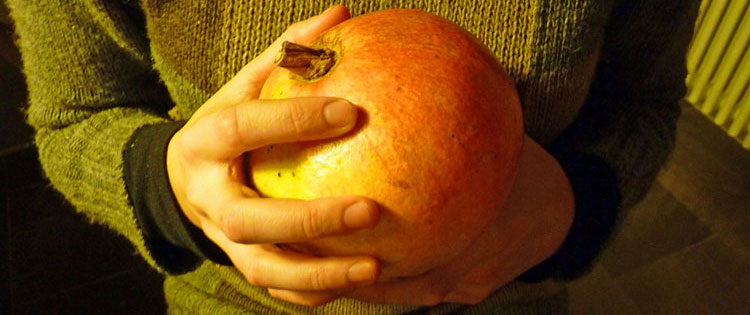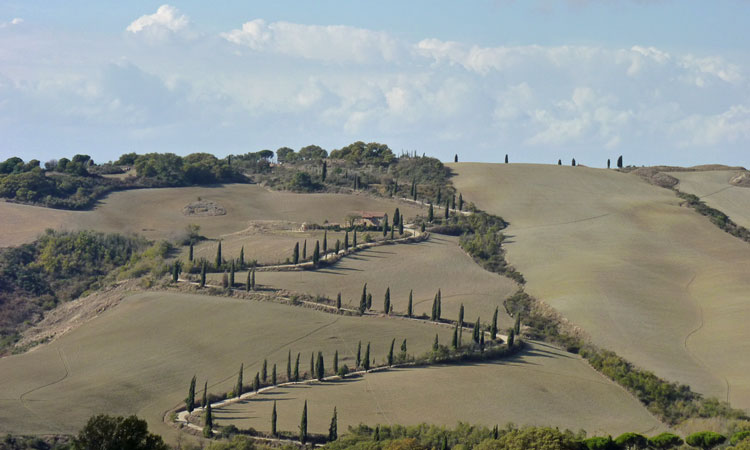 |
||
CdP
5 November 2014
L always moans about my reluctance to start lighting the stoves as evenings draw in and winter approaches. My holding back is partly due to stinginess (my Scottish grandmother has much to answer for) but also to the fact that I don’t like to admit that summer is over.
It’s the same mechanism that makes me put off doing my cambio di stagione (bringing winter clothes down from a high shelf and putting summer ones up there) though this may also have much to do with that depressing “what on earth possessed me to keep and store that horrible old thing?” feeling. This year, though, I think I can safely say that neither have really been necessary until now. Even today, with a severe weather alert out and a wind threatening to uproot trees, that wind is blowing warmly from the south and right now (I’m informed by a rather wonderful CdP PWS I found recently) it's 16.3 degrees outside. Even on those days when I’m sitting here, chained to my computer, I really haven’t felt the need to get a blaze going: the fires I light are mostly decorative. Though I have now, I admit, broken out my threadbare old winter clothes.
The clocks went back, but I dodged my usual gloom on this occasion with a weekend at Borgo Santo Pietro which was special as ever, and its gardens were looking splendid. You have to hand it to them: they think big and go for it. When we were last there two years ago the lake was a hole in the ground plus a big bureaucratic headache; now it looks like it has been there forever. Having very deep pockets helps, of course, to move things along. But even my smallest projects – my own projects, for my garden – take forever to put into action, by which time I have often changed my mind about that I wanted in the first place. Hey ho: in the final analysis, I’d rather spend my life tinkering with mine. But spending a weekend playing bocce, knocking croquet balls about, talking to the (oh-so-Tuscan) alpacas, doing yoga among the herbs and inspecting the massive kitchen garden in theirs isn’t bad either. And the countryside around there on what was an utterly sparkling weekend was particularly extraordinary – so much so that I managed not to slide into decline when darkness fell at 5pm.
In the many following days of the most beautiful autumn weather, I made quite large areas of my garden look remarkably neat.
The poor spindly roses have, finally, done what they tried and failed to do all the way through the unconvincing summer and covered themselves with blooms and quite a few leaves too: it’s good to be greeted by the perfume of R. Felicia as I go out the front door in November. The cosmos are still flowering; the drunken scent of Eleagnus (silverberry) has come and gone; the Abelia flowers have the very last bees still buzzing in them.
But productively, most things have dried up badly. My pomegranate bush, generally fruitless, produced two pomegranates this year: one so immense it tugged its branch down to the ground (it’s in the fridge now, being consumed slowly), the other pretty but tiny and unambitious. On the persimmon trees I have about five fruit in total, though I notice that others have the same problem: as I recall we had hail or high wind just as they came into bloom. My tomatoes, which usually hobble along into December, ending with vast quantities of fruit which never ripens, came to an abrupt (red) halt in early October, leaving me without the wherewithal to produce my usual green tomato chutney: a major problem. The spinach is taking forever, the broccoli produced single magnificent heads but never did much after that initial effort.
Only the cavolo nero (black kale), in fact, is doing well; but as cavolo nero is one of the world’s great vegetables, that in itself is a relief. Also looking good, if this gale doesn’t dash them all to the ground, are the medlars and the crab apples. So there’s some hope for jams. One of the medlar trees – the one closest to the steep slope – is keeling at a scary angle. I don’t think there’s sufficient hill there for its roots to get proper purchase: we’ve propped it up but this may not be enough. If the wind keeps howling, it won’t survive this storm.
The worst disaster of all this year is the olive harvest. It seems to have caught people unawares, or perhaps they were just pretending not to know because it’s so unthinkable.
Various factors meant that it was never going to be a good year: there was no really cold period last winter to make the trees steel themselves and shake off any pathogens that might have been lurking about; and there was no really hot dry phase over summer for these hardiest of plants that need maltreatment if they’re going to produce; far too much water, far too little sun; and then, just when it seemed it couldn’t get much worse, olive flies.
These are, I think, called Bactrocera (or Dacus) oleae. If they’re about they’ll land on grown fruit and lay their eggs which will then hatch out and wriggle about inside the olives. The nasty pests like damp, and temps that don’t go over 32° or so. This year, really, has been very much theirs.
You can try spraying with horrid chemicals or copper-based potions but all too often the damage has been done before you get to them and anyway, in these parts, people really don’t like fiddling with their olive trees later in the season. So the fruit is more larva than olive: even major producers are allowing their fruit to rot unpicked on the trees.
Our five worm-filled trees are not worrying me unduly: we didn’t pick them last year either. Most of those who are forging ahead regardless are producing tiny quantities of oil which is more animal than vegetable, and tastes pretty rancid. One producer I know here is selling what remains of his last year’s oil at €14; it cost €8 a litre a month ago. What we’re facing is a winter of insignificant oil bought in the Co-op rather than rich, biting stuff grown in our very own fields. It’s a sad prospect. Food will taste very different. And if we don’t have some very cold weather in the next few months, the problem will linger and get worse next year.
 |
||